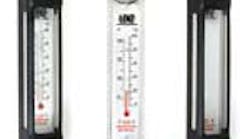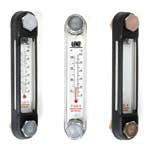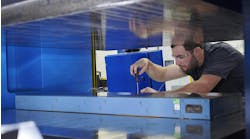Sight level gauge
T-LLG-5 ultrasonically welded level gauge is available in 3- and 5-in. mounting configurations with or without temperature gauge. Slotted guards allow 180° viewing. It operates in temperatures from 13° to 195° F and features thermometer calibration from 14° to 176° F. It comes with in. and M12 bolts and gaskets for leak-proof mounting. Gauge is oil stain and UV resistant.
Lenz Inc., (937) 277-9364, www.lenzinc.com


